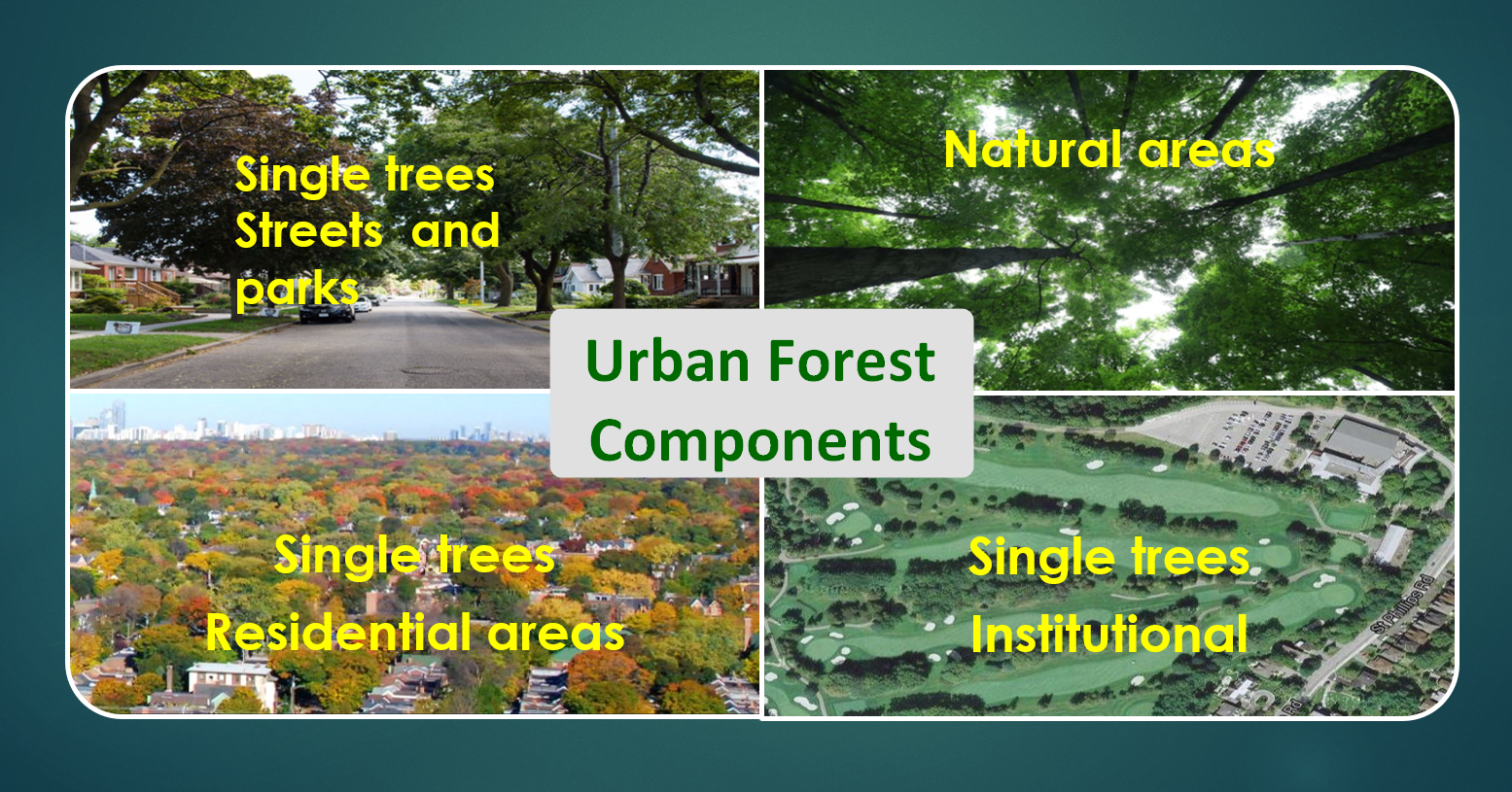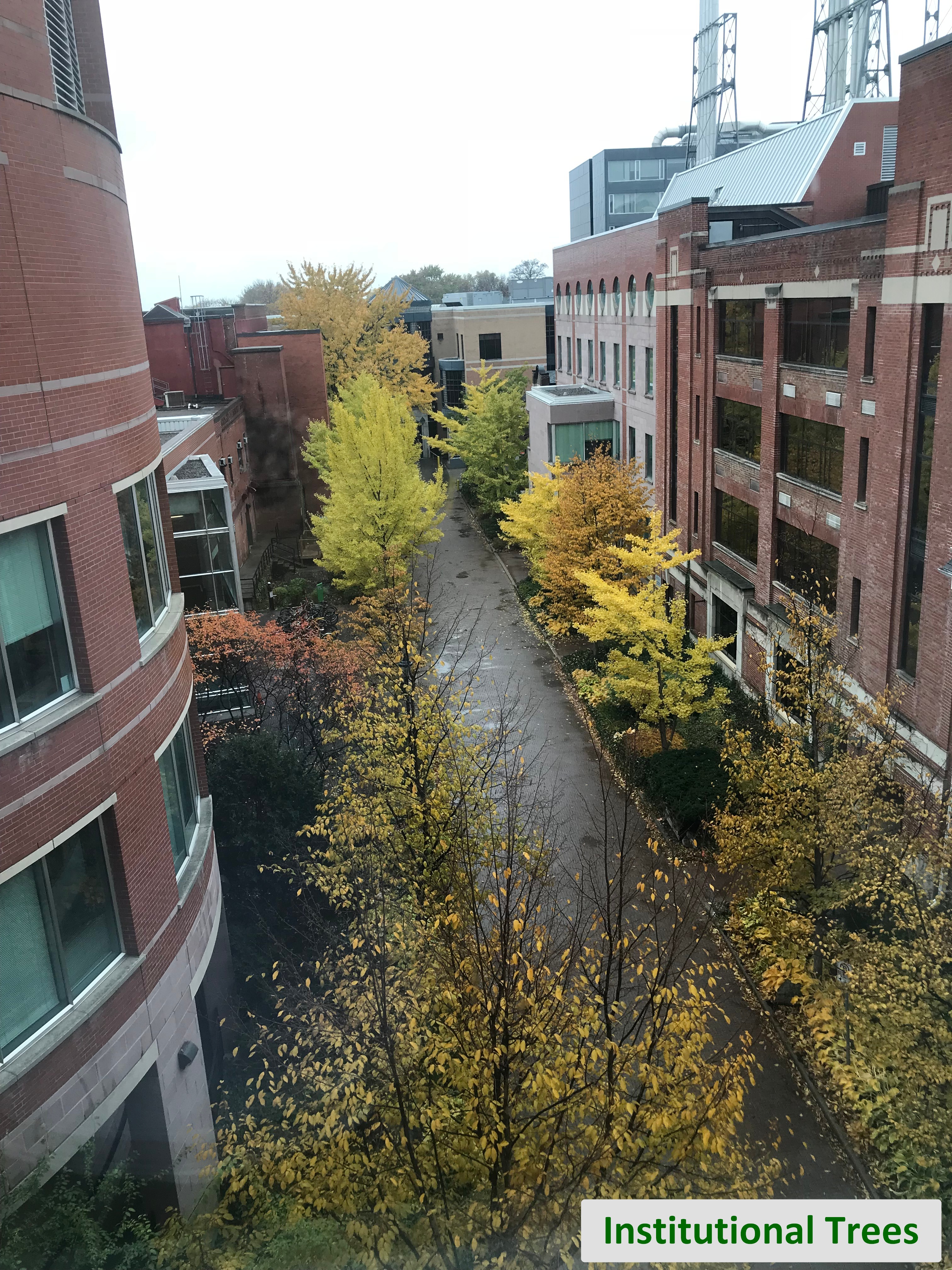Urban forests provide many ecosystem services to our cities, including mitigating climate change, moderating climate (e.g., cooling air temperatures), reducing building energy use, reducing atmospheric carbon dioxide, improving air and water quality, mitigating rainfall runoff and flooding, lowering noise impacts, enhancing human health and social well-being and providing aesthetic beauty to the urban landscape.
Urban forest composition, structure and fucntion vary across urban areas and urban land uses such as parks, streets, residential and natural areas.

| Urban Forest Component | Urban forest management based on | Public or Private Ownership | Example |
| Street Trees | Single tree | Public (municipally owned) | Street trees, trees on boulevards, median trees, trees on the right of ways |
| Park Trees | Single tree | Public (municipally owned) | A tree within a City park or public garden managed as single trees |
| Residential Trees | Single tree and Forest stand (e.g. Woodlot, natural areas) | Private | Trees in residential areas managed mainly as single trees by homeowners. |
| Institutional Trees | Single tree and Forest stand (e.g. Woodlot, natural areas) | Private and Public; Predominantly private | Cemeteries, golf courses, industrial lands, commercial lands, marginal lands, botanical gardens, university, colleges and school lands; other institutions. |
| Urban Natural Areas | Forest stand (e.g. Woodlot, natural areas) | Public and Private | Natural areas, woodlands, forested ravines, swamps, plantations, county forests, private woodlots |



